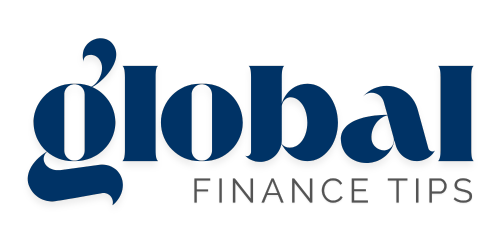Not long ago, managing personal finances required a trip to the bank, a financial advisor, or a complicated spreadsheet. Today, all you need is your smartphone. Thanks to the rise of financial technology, commonly known as fintech, millions of people in the U.S. are taking control of their money through innovative apps that make saving, investing, borrowing, and budgeting easier than ever.
Whether you’re new to fintech or already using popular apps like Mint, Robinhood, or Chime, this article explores how these digital tools are changing the way people manage their finances in the United States. We’ll cover their benefits, risks, and real-life examples of how they’re helping users make smarter financial decisions.
What Are Fintech Apps?
Fintech apps are mobile or web-based applications that use technology to deliver financial services directly to consumers. These services range from budgeting and saving to investing and accessing credit.
Some of the most common categories include:
- Budgeting and expense tracking – Apps like Mint and YNAB (You Need A Budget).
- Online banking – Digital-only banks like Chime and Varo.
- Investing and trading – Platforms like Robinhood, Acorns, and Stash.
- Credit building and loans – Services like Self, Upstart, and Affirm.
- Payment and money transfer – Apps like Venmo, Cash App, and Zelle.
How Fintech Apps Are Transforming Personal Finance
Fintech apps offer convenience, speed, and transparency that traditional financial institutions often lack. Here are the key ways they are changing the financial landscape in the U.S.:
1. Making Financial Services More Accessible
Historically, many financial products were only accessible to people with high incomes or excellent credit. Fintech apps are changing that by offering low-cost or even free services, often with fewer requirements to open an account or apply for a loan.
2. Simplifying Budgeting and Expense Tracking
Apps like Mint and YNAB connect directly to your bank accounts and credit cards, automatically categorizing your spending. This helps users see where their money goes, set budgets, and receive alerts when they overspend.
3. Democratizing Investing
Before fintech, investing in the stock market often required a broker or financial advisor. Apps like Robinhood and Stash have removed these barriers, allowing anyone to invest with as little as $1, often with zero commission fees.
4. Offering Innovative Savings Solutions
Apps like Acorns round up your purchases to the nearest dollar and invest the spare change. Others, like Digit, automatically analyze your spending habits and save small amounts of money for you without requiring manual transfers.
5. Providing Instant Access to Loans and Credit
Platforms like Upstart use artificial intelligence to evaluate loan applications, sometimes approving borrowers who might not qualify through traditional banks. Other services like Self help users build credit by reporting on-time payments to the credit bureaus.
Real-World Examples of Popular Fintech Apps
| App | Main Feature | Cost |
|---|---|---|
| Mint | Budgeting and expense tracking | Free |
| Chime | Online banking with no fees | Free |
| Robinhood | Commission-free stock and crypto trading | Free |
| Acorns | Automated investing with spare change | Starts at $3/month |
| Self | Credit-building loans | Monthly payments plus small fees |
Advantages of Using Fintech Apps
- Convenience: Manage your money from anywhere at any time.
- Affordability: Many apps are free or have low monthly costs.
- Automation: Automatic saving, investing, and budgeting features.
- Access for all: Even people with limited financial knowledge can use them.
- Real-time insights: Instant notifications and dashboards to track your finances.
Potential Risks and What to Watch Out For
While fintech apps offer many benefits, they also come with some risks:
- Data Privacy: These apps access your financial data, which can be risky if the company is hacked or sells your information.
- Over-Reliance on Automation: Relying solely on an app without understanding your finances can lead to mistakes.
- Hidden Fees: Some apps advertise as free but have fees for premium features or services.
- Limited Customer Support: Digital-only platforms may lack personalized service when you need help.
How to Choose the Right Fintech App
With so many options, choosing the right app can be overwhelming. Consider these factors:
- Check user reviews and ratings on app stores.
- Make sure the app is regulated or uses strong security measures.
- Start with free features before paying for premium services.
- Look for apps that integrate with your current bank or financial accounts.
Fintech and the Future of Personal Finance
The fintech revolution is far from over. New apps and services are launched every year, each promising to make financial management even simpler. From artificial intelligence to cryptocurrency integration, the future of personal finance is becoming increasingly digital.
For example, apps are beginning to incorporate financial coaching powered by AI, personalized investment recommendations, and even tools that help users optimize their tax returns. As technology advances, these platforms will continue to evolve, offering even more powerful tools to help users achieve financial wellness.
Frequently Asked Questions About Fintech Apps
Are fintech apps safe to use?
Most reputable fintech apps use encryption and security protocols similar to traditional banks. However, it’s important to research the app, read reviews, and ensure it follows industry standards.
Do I need to link my bank account to use these apps?
Many apps require you to link your bank account for full functionality, such as tracking expenses or automating savings. Always verify that the app uses secure connections (look for “https” and data encryption).
Can I really invest with just a few dollars?
Yes. Apps like Robinhood, Stash, and Acorns allow you to start investing with as little as $1, making the stock market accessible to nearly everyone.
What if I don’t understand financial terms?
Many fintech apps offer educational resources, tutorials, and customer support to help beginners learn as they go. Start small and take advantage of these features to build your knowledge.
Real Stories: How Fintech Helped Everyday People
Jessica, a single mother from Florida, struggled with budgeting for years. She discovered Mint and started tracking her expenses. Within six months, she managed to reduce her debt by $2,000 simply by becoming more aware of her spending habits.
Carlos, a recent immigrant from Colombia living in New York, used Chime to open his first bank account without needing a credit history or visiting a branch. He now receives his paycheck early and pays no monthly fees, helping him build financial stability.
Sarah, a college student in California, started investing her spare change through Acorns. After two years, she had saved over $1,500 without even noticing the small contributions being made automatically.
Final Thoughts: Embrace the Digital Financial Revolution
Fintech apps are reshaping how people in the U.S. manage their money, offering powerful tools that were once only available to the wealthy or financially savvy. By leveraging these digital platforms, anyone can start budgeting, saving, investing, and improving their financial health right from their phone.
Take the time to explore different apps, understand their features, and choose the ones that align with your financial goals. The future of personal finance is in your hands—literally.

